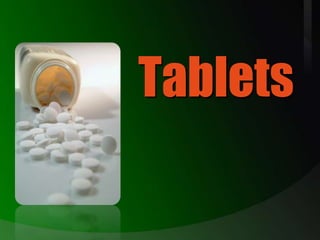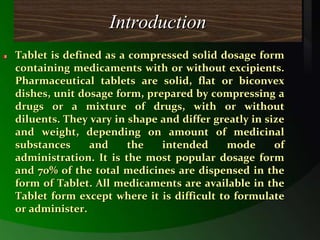This document provides information about tablets, including their definition, advantages, disadvantages and types. It discusses the main components of tablets, including active ingredients and excipients. It describes different types of tablets based on their route of administration and production process. The purposes and examples of various excipients like diluents, binders, disintegrants, lubricants and coloring agents are outlined. Granulation is introduced as a process to prevent segregation and improve flow of powder mixtures that are then compressed into tablets.










































